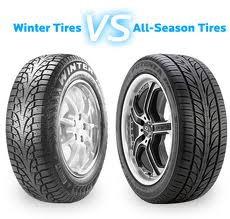 With the advent of all-season tires, thanks to Goodyear’s Tiempo back in 1977, everyone was relieved that they didn’t have to switch tires with the changing seasons. Eventually, other tire companies followed suit and nearly all vehicles were fitted with all-season tires straight from the factory. Even the replacement tires that came with the new vehicles are all-season.
With the advent of all-season tires, thanks to Goodyear’s Tiempo back in 1977, everyone was relieved that they didn’t have to switch tires with the changing seasons. Eventually, other tire companies followed suit and nearly all vehicles were fitted with all-season tires straight from the factory. Even the replacement tires that came with the new vehicles are all-season.
But the question still remains: is it more practical to rely on all-season tires or should I switch to snow tires when winter comes?
The answer is no. You can ask your auto detailing provider and he’ll tell you the same thing. While all-season tires may work well during the warmer months, it doesn’t have the traction snow tires have, that’s necessary for treading snow and icy paths. As a matter of fact, travelling with all-season tires during winter may actually make your vehicle more unsafe for driving.
So when it comes to buying spare tires, it’s best to keep a set of snow tires handy especially during the coming winter time.
But apart from purchasing a set of snow tires, here are a couple of tips to ensure that you drive safely during the winter season:
- Don’t skimp. Whether you’re driving a 4WD or a front-wheel drive vehicle, it’s best that you have a set of four snow tires installed. Installing two tires only could change traction of the front or back wheels and that could yield unpredictable handling. This could be very dangerous.
- Switch to snow tires on Thanksgiving and go back to all-season tires during Easter time. Warm temperatures can easily wear down the snow tires’ softer rubber compound.
- If you’re not using your snow tires, store them in a black plastic bag to avoid or at least reduce oxidation. You must also store them in cool, dry areas out of the sun.
- Remember that even with snow tires, taking extra precautions when driving in winter time can get you to your destination safely. Drive slowly but surely and anticipate traffic changes ahead. Take your time. Don’t be in a hurry to get to your destination.



